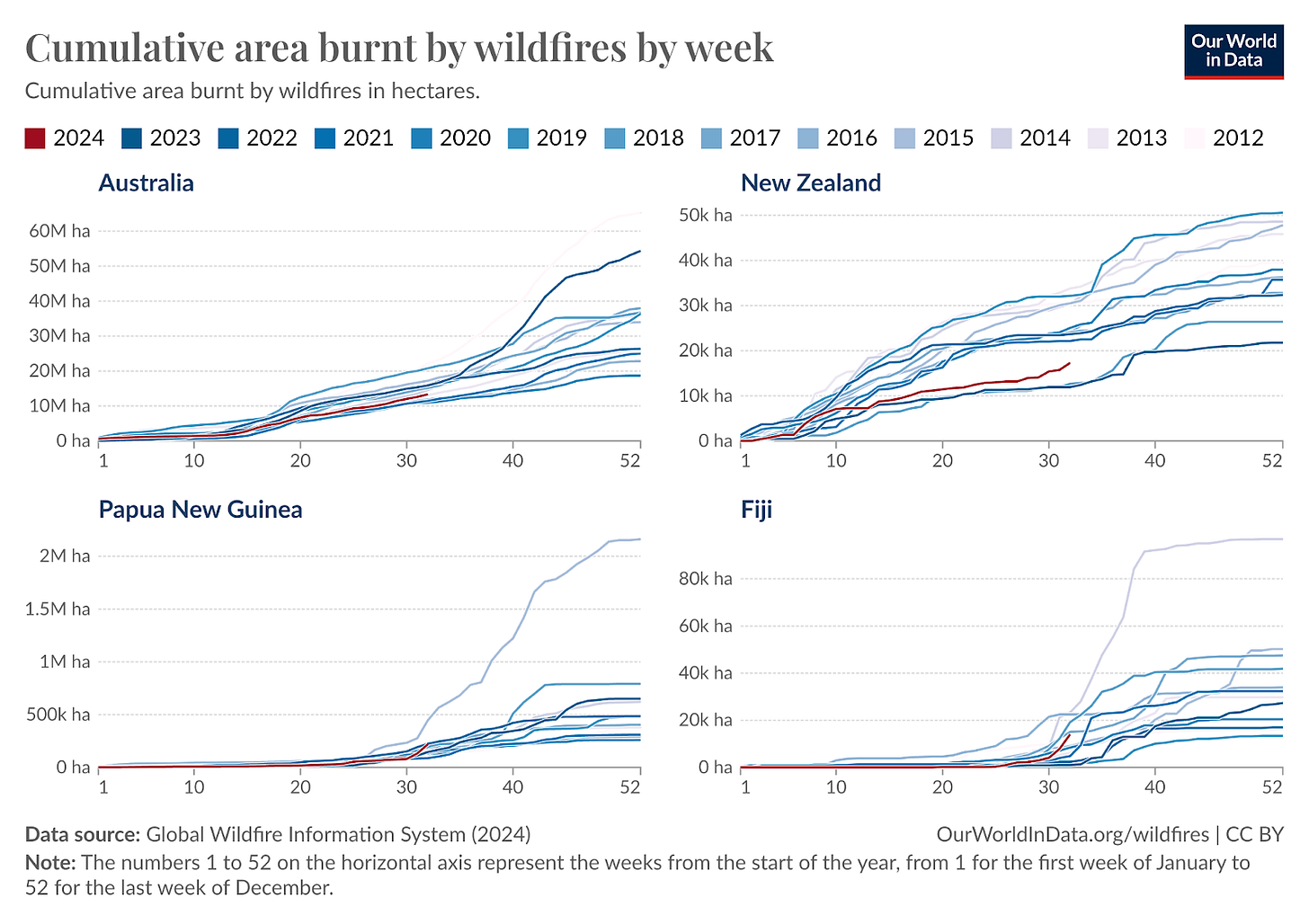2023 was an exceptional year for Canada. The amount of area burned was more than double the previous record since the 1970s (this is probably also true with even earlier data). Below I’ve graphed the area burned by year, since 1972, based on data from the Canadian Wildland Fire Information System.
It was also a very large burn year in Greece. The amount of area burned was not quite as high as 2007, which was extreme, but it was the second highest since the 1980s, at least.
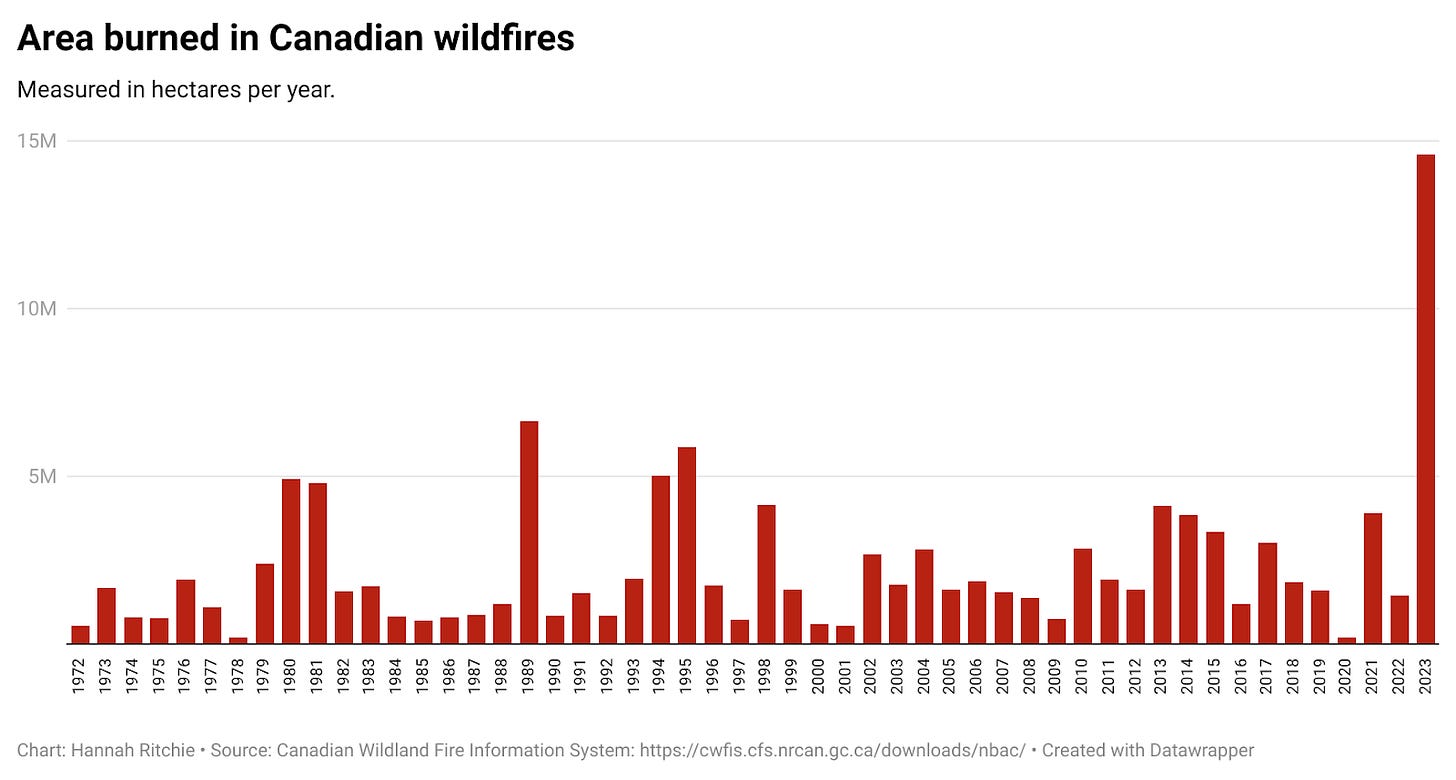
Having seen an uptick in stories and headlines in recent weeks, I thought it was time to check in on the scale of wildfires across the world this year.
As always, the disclaimer to this is that the wildfire season is not finished: these numbers will change, and can shift dramatically, in a matter of weeks. This is a check-in, not a final evaluation.
Global burned area is trending high for this time of the year
In the chart below you can see this evolution across the year. The data for 2024 is in red; the trend for other years from 2012 onwards are in blue. It comes from the Global Wildfire Information System, which uses satellite measurements to track and monitor wildfires across the world.1
At this point, global wildfire burn is the highest it has been since 2012.2 You can see that, until a few weeks ago, it was a pretty average year. But there has been a steep rise since then.
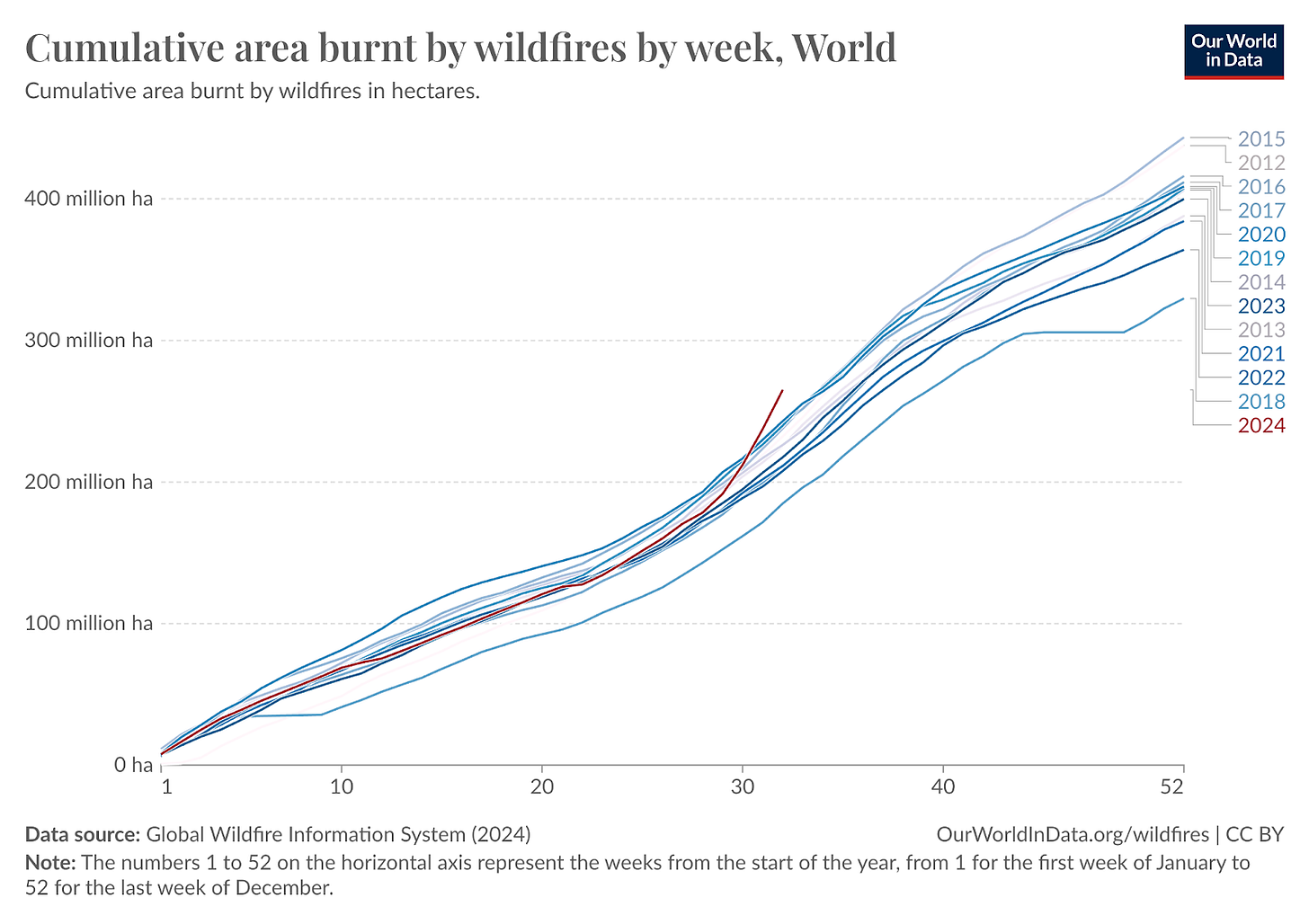
Where are the big wildfires happening?
The chart below shows this same data by region. I’ll zoom into specific countries later.
So far, it has been a low-to-average year for Europe, Asia, and Oceania. The uptick in recent weeks has been in North and South America, and especially Africa. The latter two are seeing their “worst” year at this stage since the dataset began in 2012. In North America, only last year was higher.
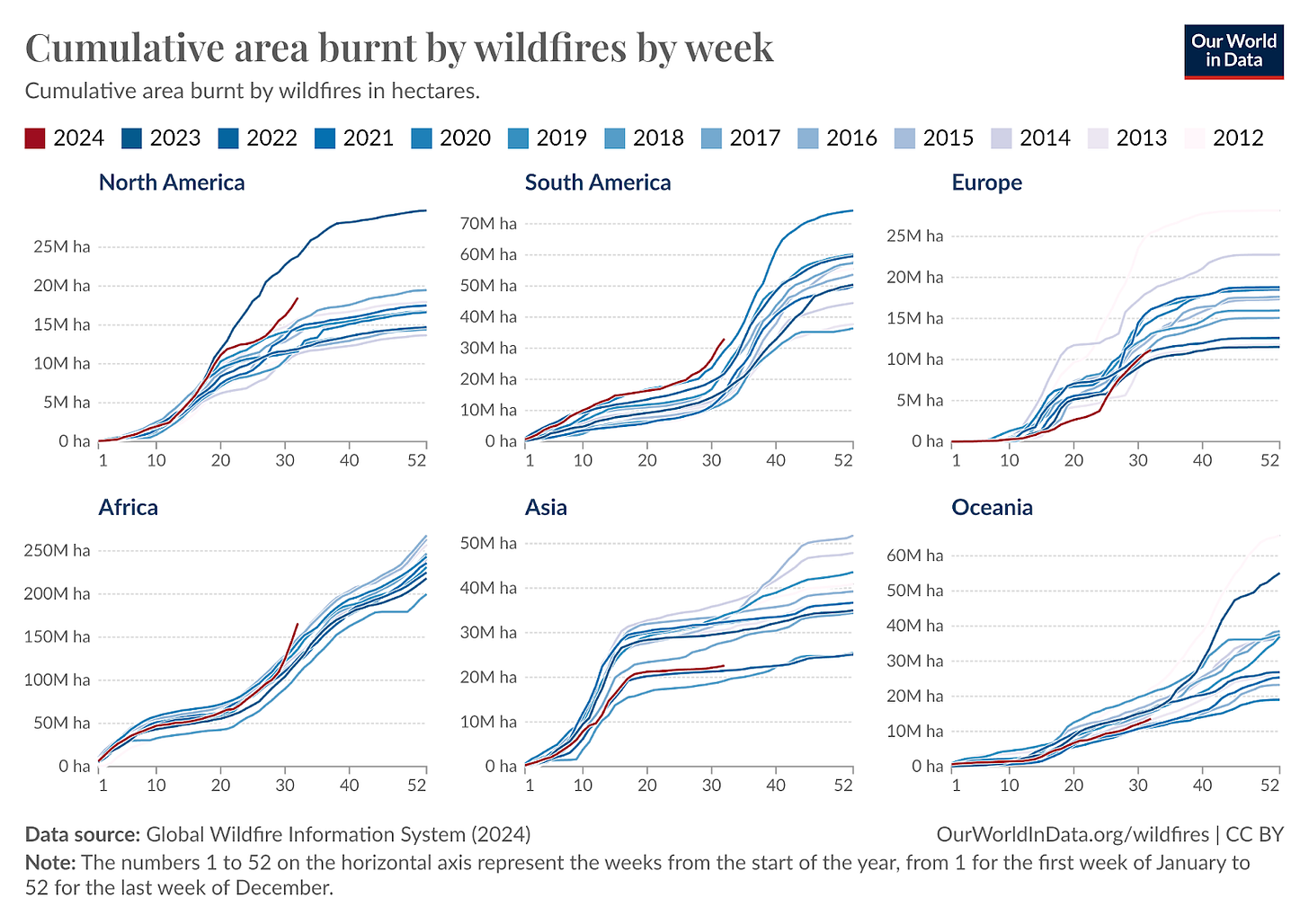
Which countries are seeing a large wildfire year?
North America
The big uptick that we saw for North America in recent weeks has been in Canada. You can see that a month ago, it was also tracking for a relatively “average” year, but burn rates have increased steeply in the last few weeks.

South America
Brazil, Bolivia, Venezuela, Ecuador and Peru are all seeing record years (based on data since 2012) for this time of year. You can see this in the chart below, where I’ve shown these countries first.
Not every country has seen large wildfires, though. In Argentina and Chile, it has actually been a low-burn year. Paraguay and Colombia are experiencing pretty average conditions.
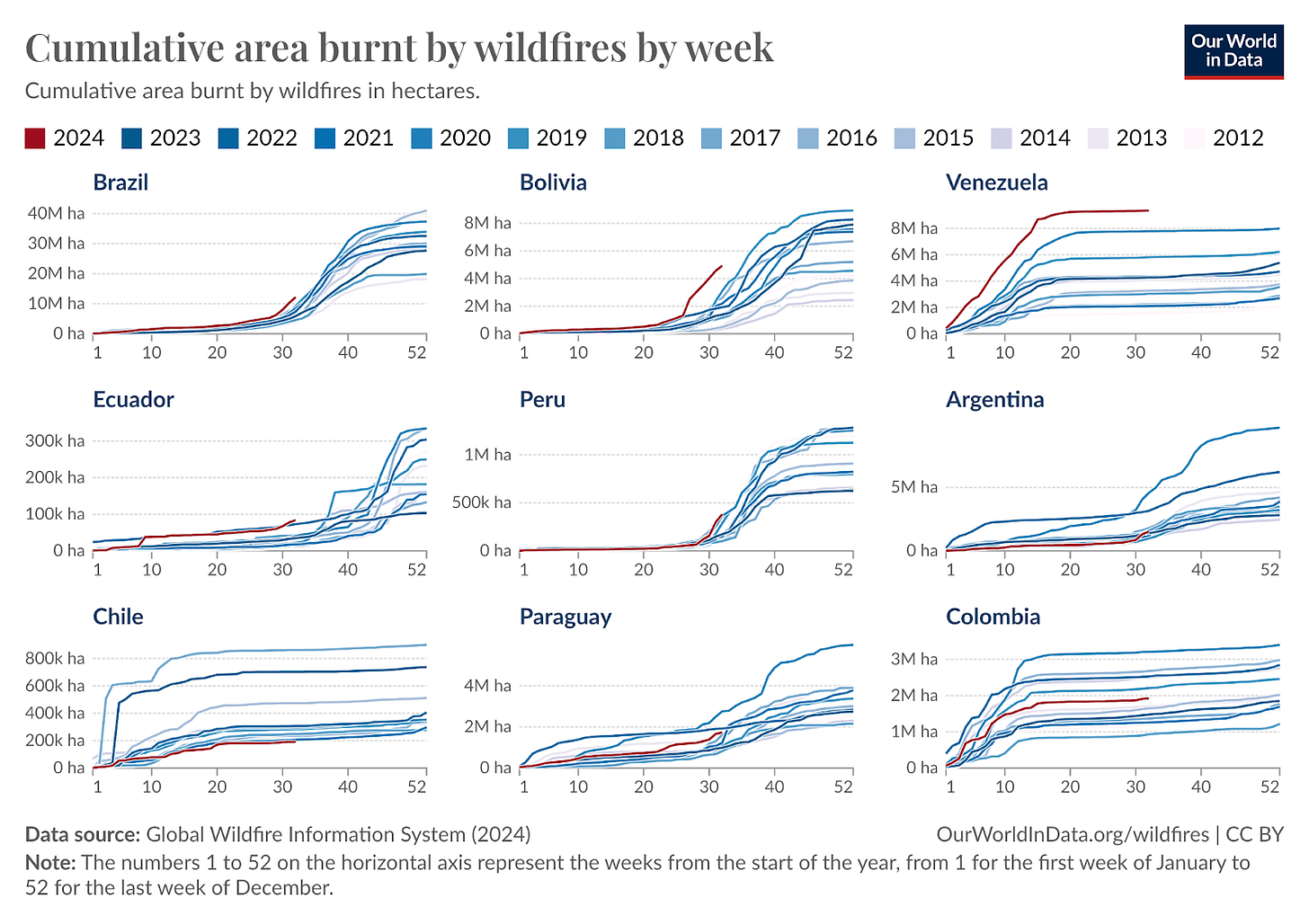
Africa
But it has been a big year for many countries across Africa, with a rapid uptick in burn area over the last month. You can see this in the trends for Angola, Democratic Republic of Congo, the Congo, and Zambia in the chart below. Most of these countries are right in the centre of the continent. Wildfires in the South, East and West have been less extreme, and are typically “on-trend”.
Savanna burning for agriculture is a major driver of wildfires across many of these countries. Farmers will often burn crop residue, and clear vegetation for new farming land. So it’s unclear whether most of this is deliberate land clearing, or unintended natural outbreaks.
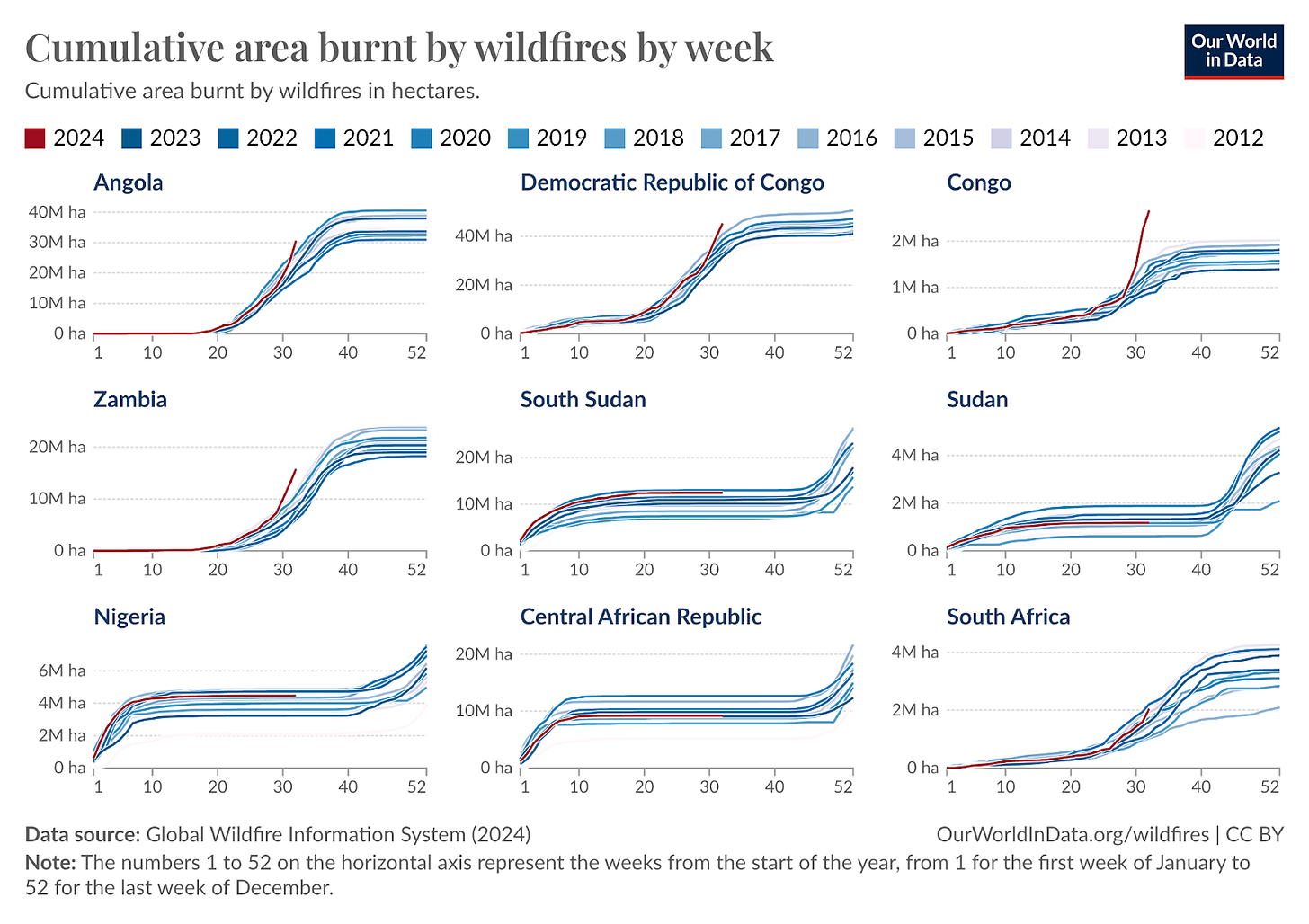
Europe
Wildfires have been growing in Greece in the last few weeks, and this is exactly the time that in previous years, burned area increased rapidly. Often this happened within a period of one or two weeks. So, this could change rapidly over the next month.
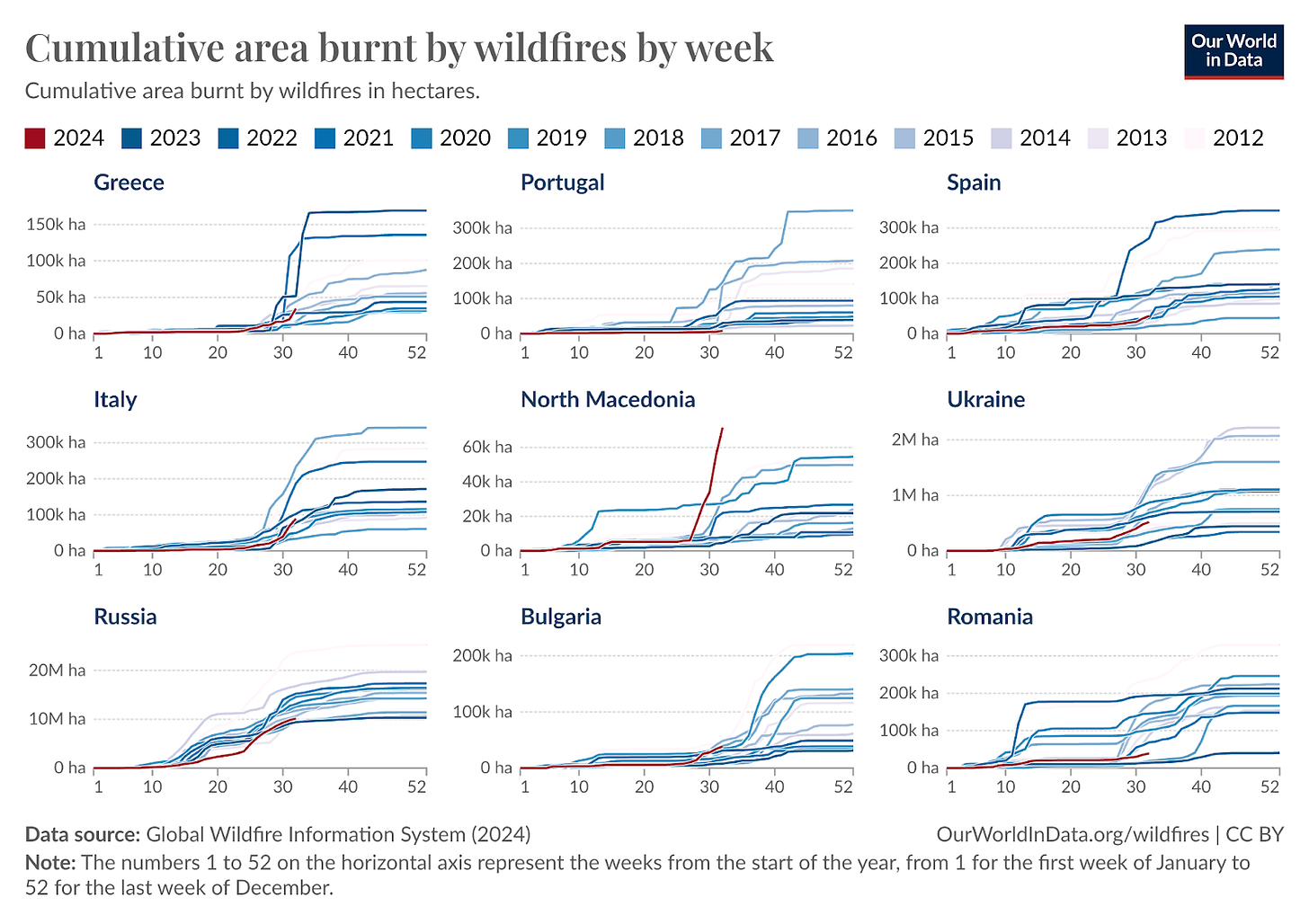
Asia
In the chart below you can see the trends for a number of countries in Asia.
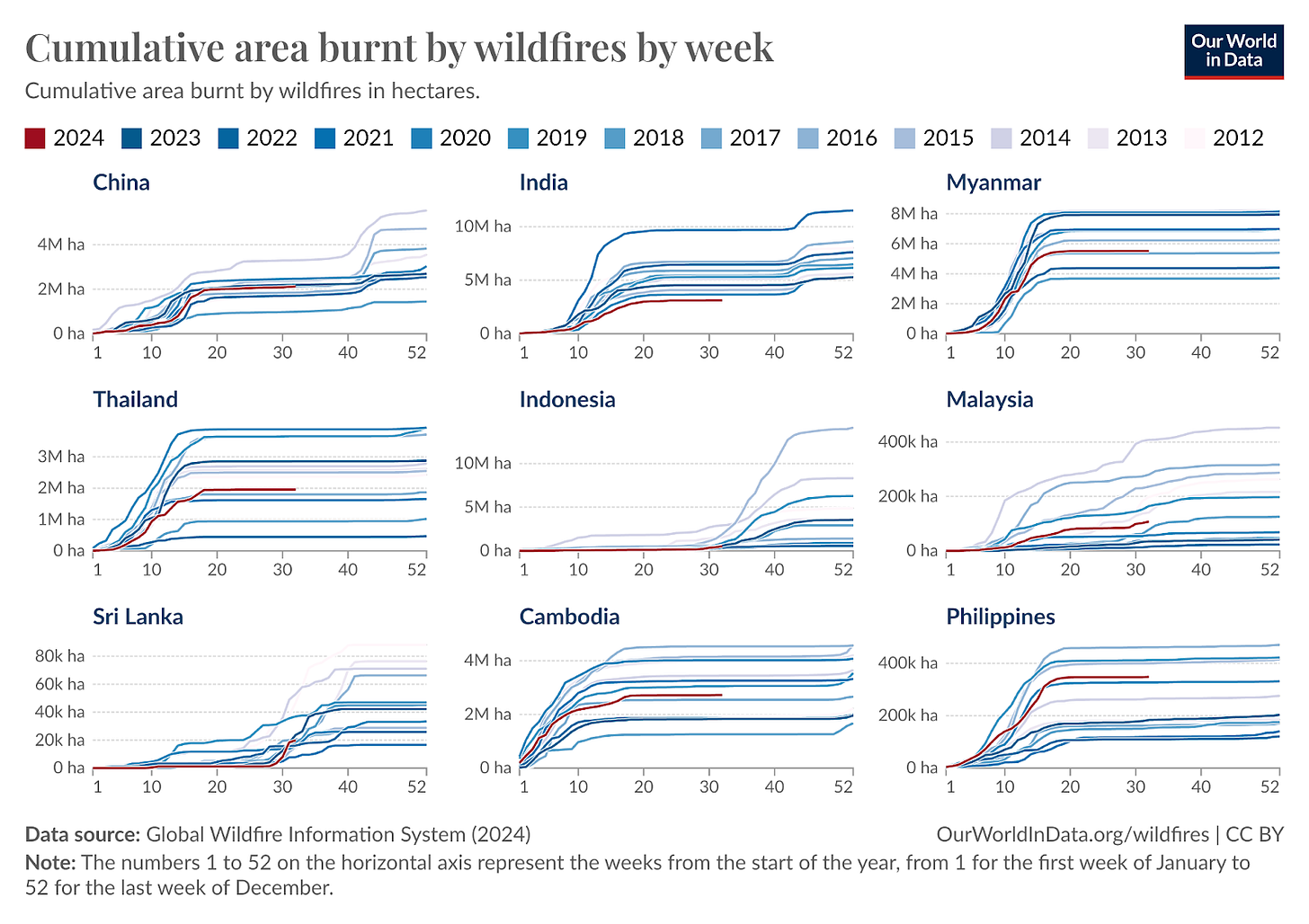
Oceania
Last year was a big year for Aussie fires — the highest line for it in the chart below is 2023.
